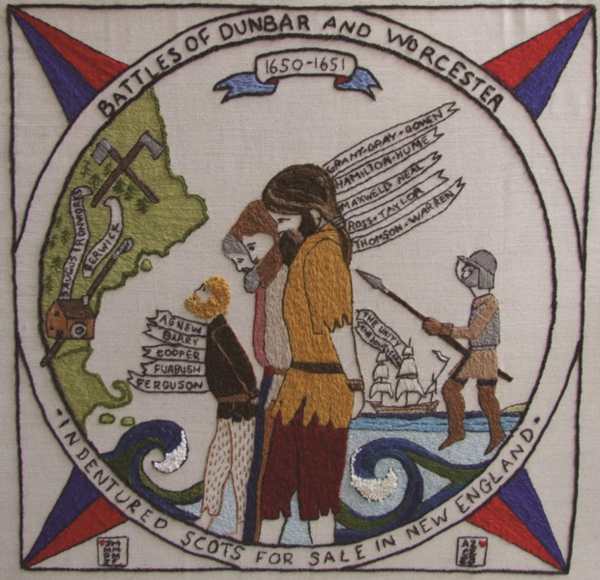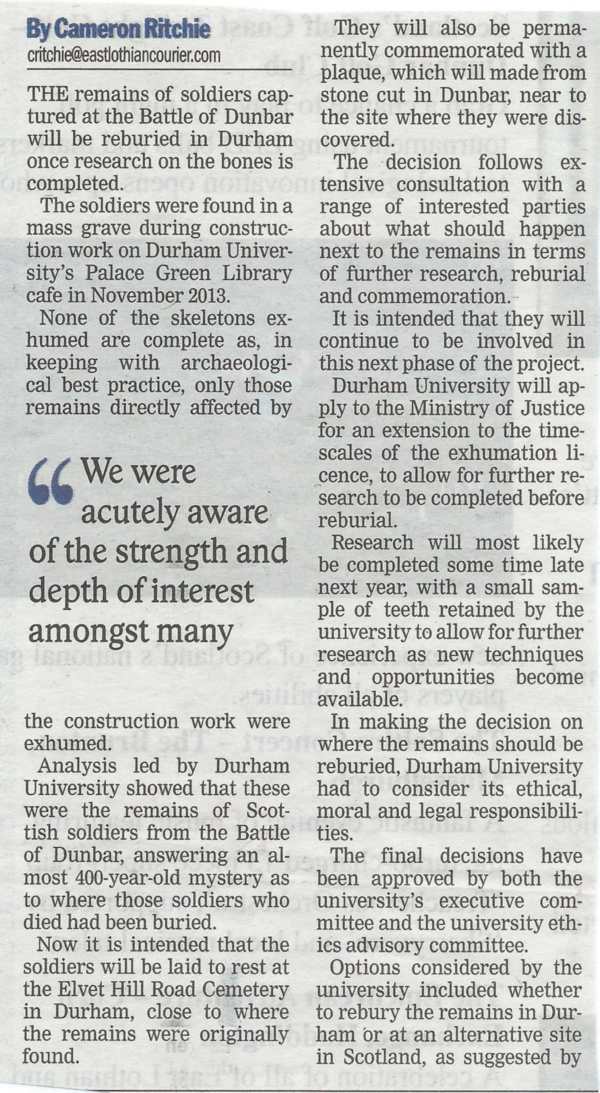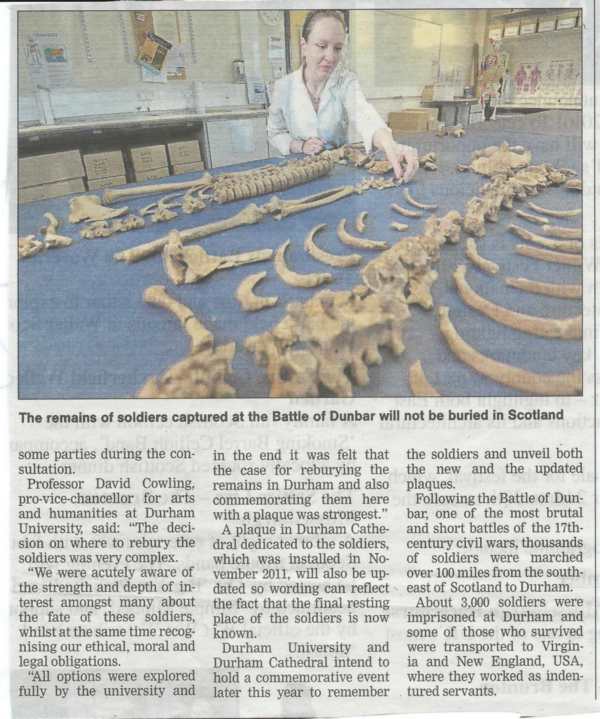Scots for Sale: Not all Scots prisoners were marched to Durham .. some other stories are told
Diane Rapaport describes the fate of 150 Dunbar prisoners who were exiled and sold into the American colonies
For the past 20 years Diane Rapaport has been researching and meeting descendants of the 150 Scots prisoners from Dunbar sold into exile aboard Unity bound for Boston, Massachusetts. Her own and those of her partner Dan Hamilton were amongst them she told her audience, which included six other descendants, at the Town House in Dunbar on Sunday September 18th.
Also present was Associate Professor John Cleary from Heriot Watt University, whose own research has been working on 'surname' [rather than Durham's bones and teeth] DNA from the lists of prisoners sold into the American colonies by Cromwell. He was determined to get the rebellious Scots as far away from their conquered native land as possible although soon enough many of their descendants were fighting the British to win American independence for the 13 colonies in 1776.
To carry the research forward, a Scottish POW Society [GO SPOWS@scottishprisonersofwar.com ] has recently been established in the USA which includes a second ship, The John & Sara, which carried more Scottish prisoners from Charles II's unsuccessful attempt to take back the throne after his father's execution which ended in failure at Worcester in 1651. A full manifest of names is available from that second ship but not disappointingly from the Unity.
A comprehensive review by Diane Rapaport was published in history Scotland Vol.5 No.1, Jan/Feb 2005 entitled 'Scottish Slavery in 17th Century New England'.
Scottish Diaspora Tapestry tells the tale
The story of Scots for Sale is also well related in the Scottish Diaspora Tapestry, on tour in Toronto as the re-enactment took place.

________________________________________________________________________
US 02: Battles of Dunbar & Worcester 1650 and 1651
Stitchers (Bowdoin, Maine, USA): Jan McIntyre, Ellen Bibeau, Carol Rogers, Monica Mann, Pam Matthews, Jeanne Finlay.
After the English Parliament executed Charles I in 1649, his son was proclaimed King in Scotland. This triggered an invasion by Oliver Cromwell, who defeated the Scottish forces at Dunbar in 1650. Some of the prisoners were used as forced labour, including 150 men sent to New England on the ship Unity. Sold for between £20 and £30 each, many were taken to the Saugus and Hammersmith ironworks at Lyn, or to Berwick in Maine. Back at home Charles II tried to turn the tide by invading England with a Scottish army. It was defeated at Worcester in 1651, leading to hundred more Scots prisoners being transported.
US02 Blàir Dhùn Barra & Worcester
An dèidh do Phàrlamaid Shasainn Teàrlach I a chur gu bàs ann an 1649, chaidh a mhac a ghairm mar rìgh na h-Alba. Phiobraich seo ionnsaigh bho Oliver Cromwell, a thug buaidh air na feachdan Albannach aig Dùn Bharra ann an 1650. Bha cuid de na prìosanaich gan cur a dh’obair an aghaidh an toil, a’ gabhail a-steach 150 neach a chuireadh gu New England air an t-soitheach Unity. Air an reic airson £20 agus £30 am fear, chaidh mòran dhiubh a thoirt gu gàrradh-iarainn Saugus & Hammersmith aig Lyn, no gu Bearraig ann am Maine. Air ais aig an taigh, dh’fheuch Teàrlach II ri cùisean atharrachadh le ionnsaigh a thoirt air Sasainn le feachd Albannach. Chaidh buaidh a thoirt air ann an Worcester ann an 1651, a’ leantainn gu ceudan eile de phrìosanaich Albannach a bhith air an cur a-null thairis.
.... but the bones of the Scottish prisoners marched to Durham lately discovered will indeed remain in Durham



Published Date: September 21st 2016
|





